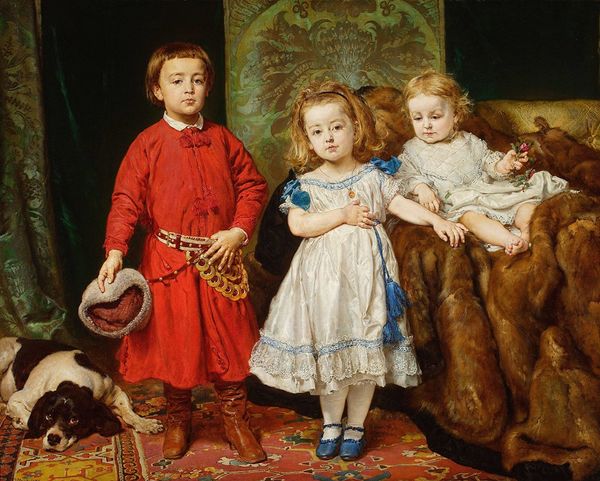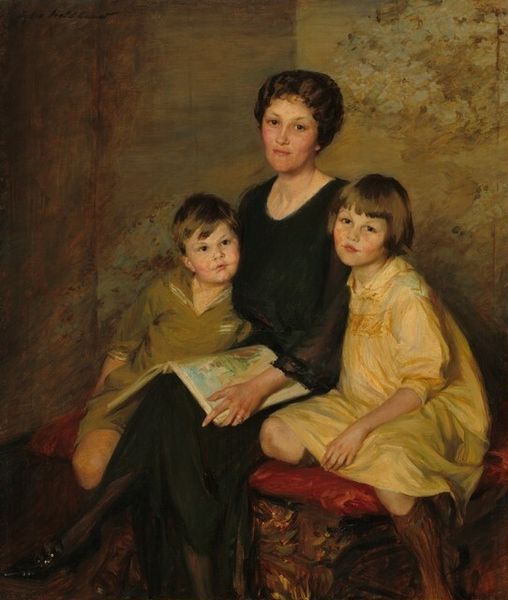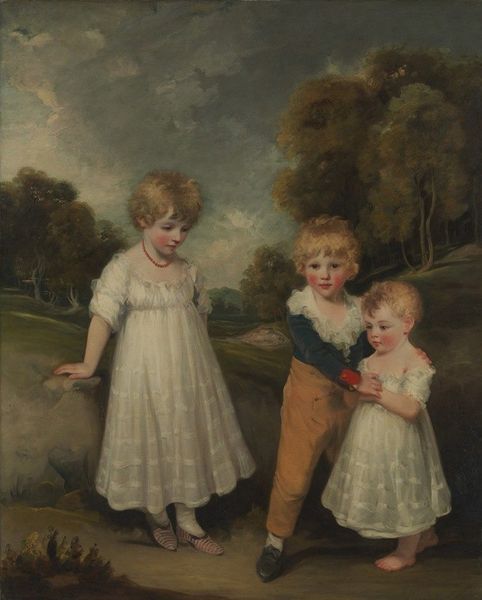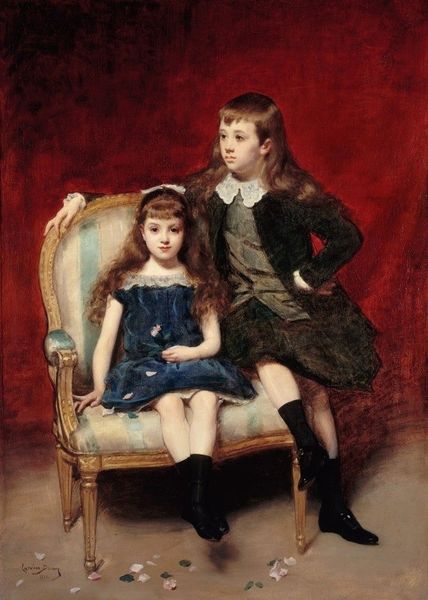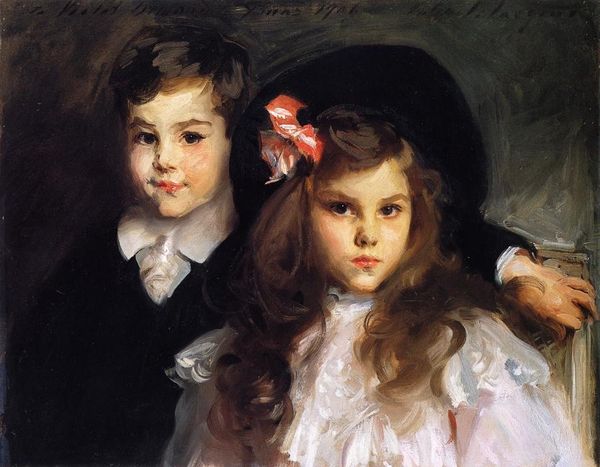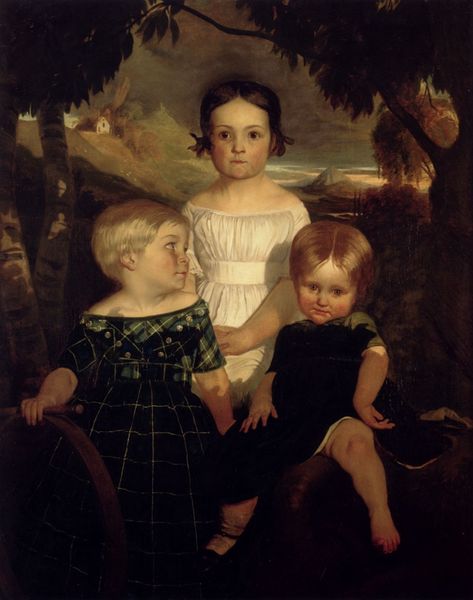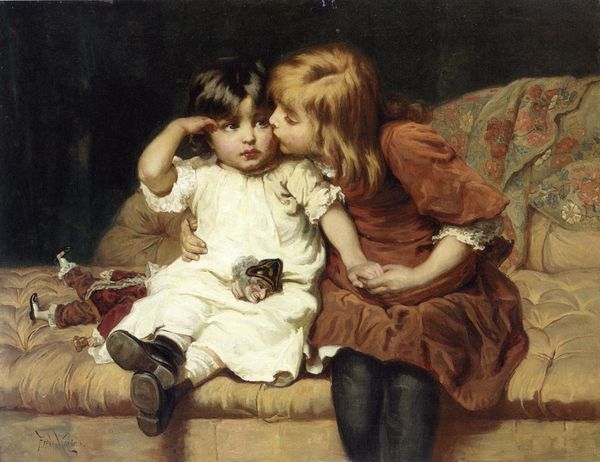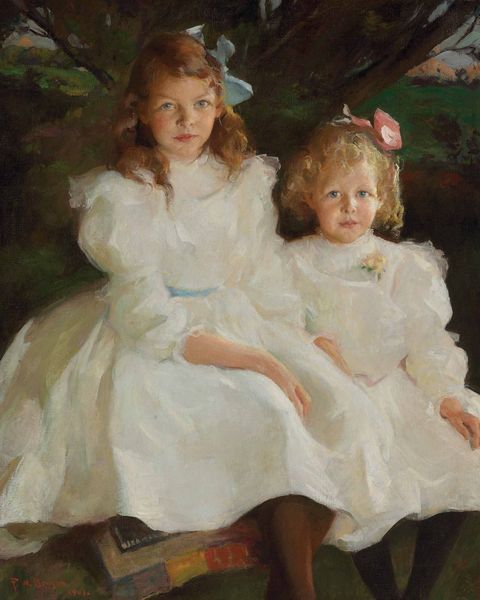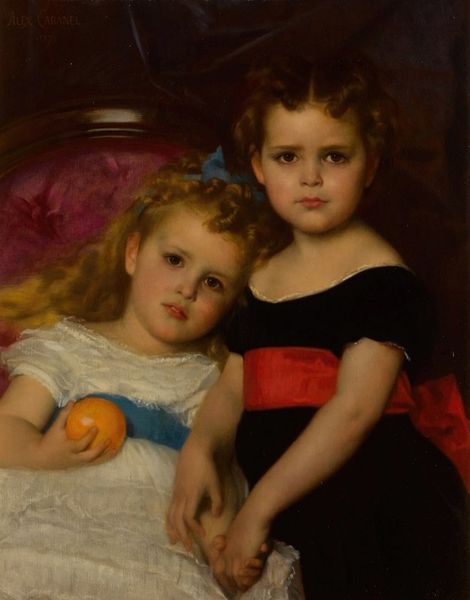
painting, oil-paint
#
portrait
#
gouache
#
painting
#
oil-paint
#
figuration
#
oil painting
#
group-portraits
#
romanticism
#
genre-painting
#
realism
Copyright: Public domain
Editor: This oil painting, titled "Portrait" by Konstantin Egorovich Makovsky, captures three children in what looks like a well-to-do home. I'm immediately struck by the almost melancholic expressions on their faces, despite the rich colors and detailed rendering. What can you tell me about how the piece might have been received during its time? Curator: It's fascinating to consider how a portrait like this functions within its socio-historical context. Child portraiture in the late 19th century became increasingly popular among the burgeoning middle and upper classes as a means of displaying their prosperity and social standing. The somewhat serious demeanor of the children isn't unusual; it reflects a certain Victorian sensibility regarding childhood. The children's garments become significant, reflecting not just wealth, but also ideas surrounding how children should be presented and seen within society. Notice the chair: what does that say to you about access? Editor: That’s a great point. It seems very staged, like a carefully constructed performance for the parents' social circle. Do you think the artist intended to critique or simply reflect that social dynamic? Curator: That's the question, isn't it? Makovsky was a successful portraitist who clearly catered to this clientele, and likely wanted to stay that way. But can we interpret that hint of melancholy as a subconscious comment on the pressures placed on children of this social class, an early loss of innocence and awareness of being commodities? To consider Makovsky's place as a prominent artist within the system allows for us to explore questions of power, representation, and the artist's complicity or possible subversion. Editor: This makes me rethink my initial impression of the piece. It is not just a depiction of children, but a window into the complex social and political landscape of its time. Curator: Exactly. And that's why contextualizing art through historical understanding helps us see beyond just the surface. It unveils the hidden stories embedded within the brushstrokes and composition.
Comments
No comments
Be the first to comment and join the conversation on the ultimate creative platform.
